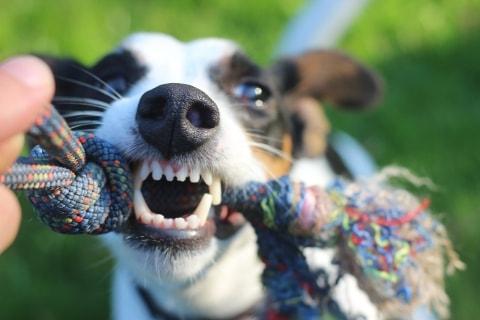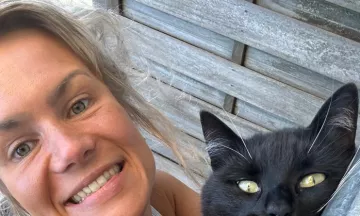Maintaining oral health and choosing the best method are part of caring for your pet. Many mouth problems can have health consequences for your cat or dog. Fortunately, there are things you can do as prevention. Do you have to brush the teeth of your pet or are there other ways?
Healthy teeth
Our pets are meat eaters, so your dog or cat depends on its strong teeth to handle its food. Inflamed teeth or gums not only cause pain and discomfort but they can lead to health problems. Bacteria in the gums can enter the bloodstream and cause problems elsewhere in the body, for example, in the kidneys or even the heart. That’s why it is important to take good care of your pooches teeth!
Nutrition and teeth
A healthy diet contributes to healthy teeth. As with humans, poor nutrition can cause inflammation. Conversely, certain foods can keep the teeth healthy: special, hard food can rub along the teeth during chewing which cleans the teeth. But these commercial so-called dental treats are not the whole answer. Often your dog or cat will swallow them without chewing them, which will destroy the cleaning effect. In addition, many snacks contain a high level of carbohydrates such as grains. These can increase the chance of dental plaque and tartar. Therefore, our recommendation is to provide high-quality food with a high percentage of meat and as little carbohydrate as possible.
Chewing for healthy teeth
Dogs LOVE to chew on stuff. And the good part is that prolonged chewing cleans their teeth! Choose dried meats such as bull's liver or beef skin, raw bone (from non-standing parts), or chew toys such as a rope.
Cats, unlike dogs, have little need for chewing. They have a greater need for high-quality protein from muscle meat than from organ meat. They don’t chew muscle meat so much as they tear it with their incisors. To keep the teeth of your cat healthy, proper nutrition and regular checkups are the way to go.

Check the teeth yourself
It is important to have your pet's teeth checked by the vet every year as part of the annual vaccination and health check. But it is also important to regularly take a look at the teeth yourself in order to detect any problems early.
It is best to get your puppy or kitten accustomed to a routine examination from an early age. But even if your pet is older, you can get him or her used to a dental check. First start by stroking your dog or cat around the head, then gently massage the mouth. Cats in particular often like this. Is your pet relaxed? Then you can gently open the mouth to check the teeth.
The gums should look firm, pink, and healthy. Pigmentation spots are common and are not a problem. Red, bleeding gums may indicate inflammation, and if it is not treated, the gums can become soft so that the teeth eventually become loose. Also check for plaque: clean teeth are white, while dental plaque turns yellow or brown and accumulates against the edges of the teeth and molars.
Signs of dental problems
When there's a problem in the mouth, your pet might experience pain or discomfort and eventually lose his or her appetite. Drooling or not wanting to play games with the mouth such as pulling rope can indicate dental problems. Also if a pet becomes lethargic, suddenly loses weight, or if your dog continues to howl or your cat keeps nagging, this can be an indication of mouth problems. Bad breath is another sign: a healthy dog or cat never has a smelly mouth! If you observe any of these things, go to a veterinarian to have them checked. When should I take my pet to the vet?
Is toothbrushing really necessary?
Some animals suffer from dental problems frequently while others have lifelong shiny healthy teeth without complaints. In addition to diet and lifestyle, predisposition is also a factor in dental problems.
If you remove the excess food residues from the time they are young with a cotton swab or gauze after every meal, toothbrushing is not necessary in most cases. But if your cat or dog tends to have dental problems, it may be necessary to regularly brush the teeth with a soft toothbrush, a piece of gauze, or a special wipe that wraps around your finger. You can also use a toothpaste specifically for dogs and cats.
First let your animal get used to the toothbrush or the cleaning cloth and slowly build it up to two or three times a week. You don’t need to clean the inner side of the teeth because your pet scrapes it with their tongue which keeps it clean.
Are you a pet sitter at Pawshake and do you have experience with dental care? Stand out from the crowd and mention your special skills on your profile.





